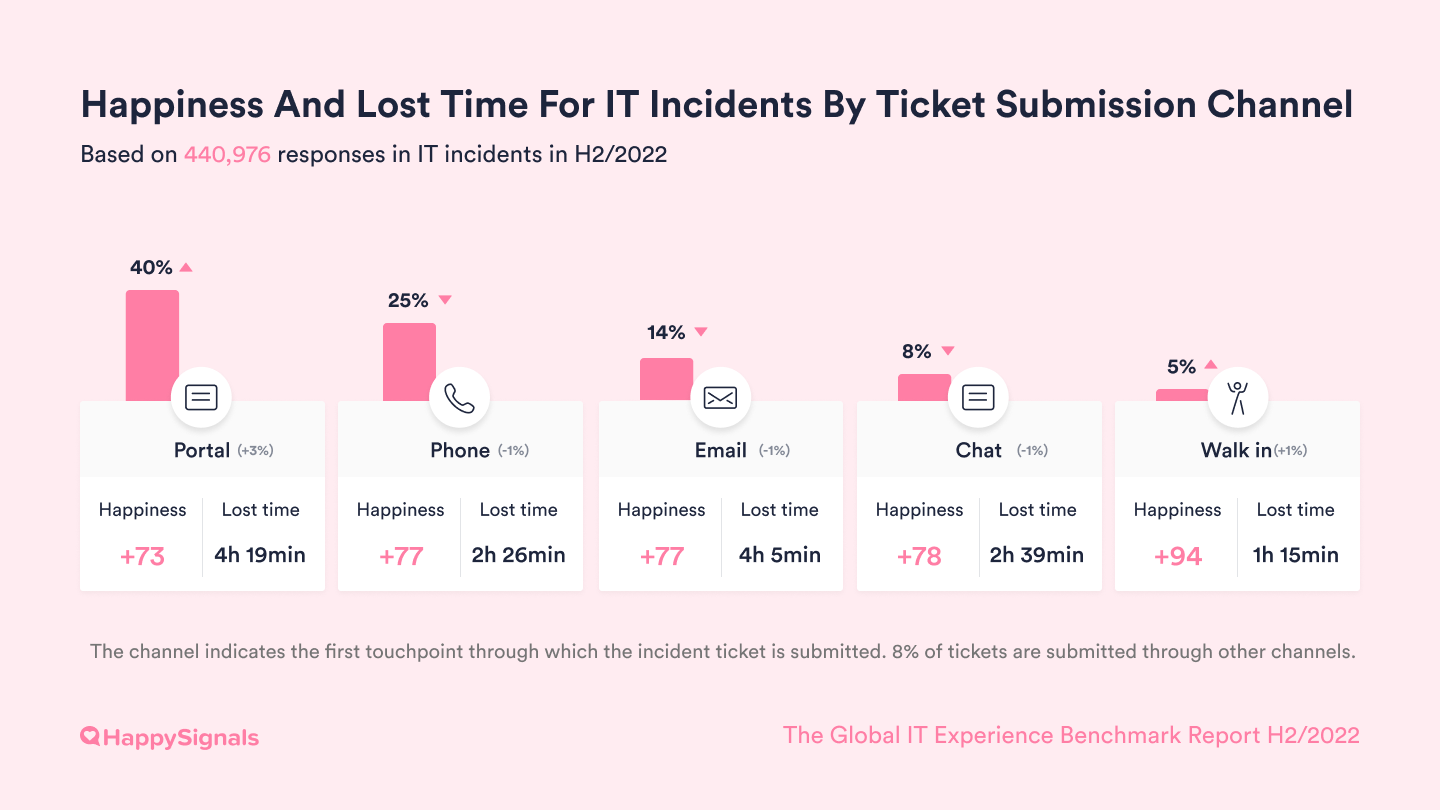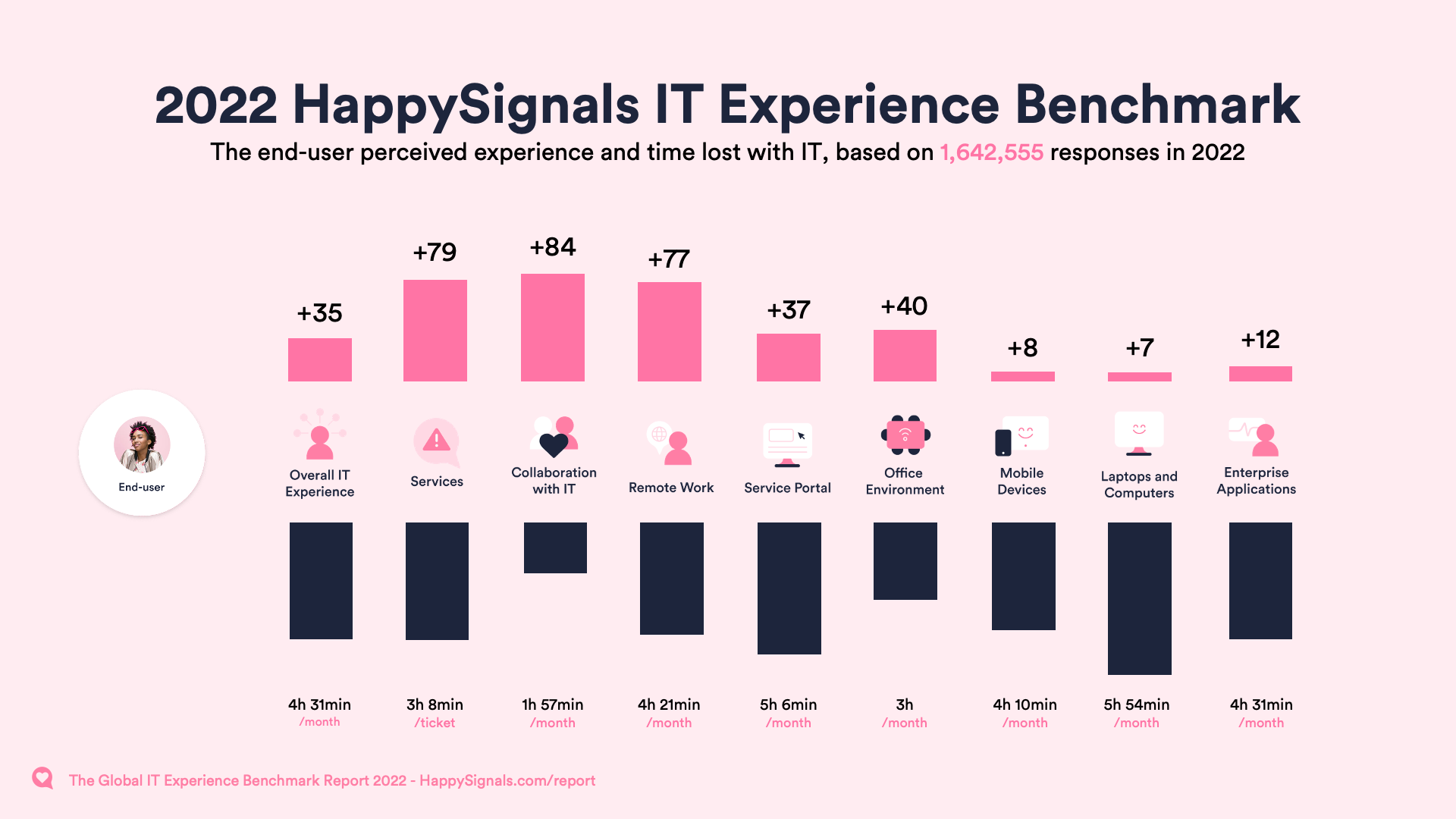“XLAs” or experience level agreements help organizations drive up operational efficiency and improve the resulting outcomes. It’s why CEOs and other C-level leaders are adding experience management and XLAs to the corporate management arsenal to help ensure that the corporate IT organization, or third-party IT service provider, and potentially other business functions effectively support business and employee needs.
How well does your IT organization meet business needs?
Corporate IT capabilities are a good place to start with experience management. It doesn’t matter if your IT service delivery and support capabilities are provided internally or outsourced, C-team members are still likely to share their teams’ IT “horror stories” despite the monthly IT reporting pack showing that the agreed-on service-level targets are consistently met.
The usual cause is that the employed best-practice IT metrics, and the associated service level targets, measure the “mechanics” of IT service delivery and support. They are operational metrics that assess how fast work is done and “how many?” rather than the delivered business outcomes and peoples’ experiences. So, while an IT capability might be efficient, it might be far less successful in terms of business value.
This disconnect is the root cause of “watermelon” service level agreements (SLAs) or the “watermelon effect,” where the consistently “green” performance results hide the “red” of end-user unhappiness. And it’s why CEOs and CIOs are increasingly adopting XLAs. The experience data also provides a platform to make data-informed decisions on the right improvements to close the expectation gaps in the IT service delivery and support areas that matter most.
This issue and opportunity is covered in more detail below.
How XLAs differ from the existing IT metric portfolio
XLAs focus on measuring the “right things” in the right places and help ensure IT’s investments in improvement activities address “what matters most” to the business and employees. This focus differs from traditional IT metrics and the associated SLAs that focus on operational performance – such as “how fast?” and “how many?” – rather than outcomes. The monthly IT reporting pack can show the IT service provider performing well against agreed targets with these metrics. However, there’s still employee dissatisfaction with the IT services and support they receive.
A good example of this issue is an outsourced IT service desk that saves the customer money, uses IT service management (ITSM) industry best practices, and hits all its contractually agreed targets. On the face of it, the service provider is performing well, and the key performance indicators (KPIs) reflect this. However, the customer’s employees feel insufficiently enabled – with IT negatively impacting their productivity and the business operations and outcomes they contribute to.
But this latter view is usually only anecdotal, with the traditional SLAs and metrics “blind” to the issues employees are experiencing and their adverse impact. XLAs allow IT organizations to look beyond the operational-performance-focused metrics to better understand how they are helping or hindering the employees they serve.
The importance of experience data
Some might argue that customer satisfaction (CSAT) scores are sufficient to understand how end-users feel about their IT services. However, as with the other “green” metrics, CSAT questionnaires can be overly operational-focused too – measuring the quality of a transaction, i.e. what was done, rather than what was achieved in terms of the quality of the experience and outcome. Unfortunately, CSAT questionnaires are ineffective in understanding what employees think about the services and support they receive – the good, the bad, and the ugly.
Instead, experience management and XLAs allow IT organizations to better see what’s happening at the key touchpoints employees have when using IT services. They help organizations identify issues and understand which are most important; with this data and insight a platform to drive the improvement of operations, services, and outcomes in the right places. Experience data also allows service providers to understand and address the underlying root causes of issues and not just the visible symptoms.
How XLAs benefit CEOs
If you’re a CEO charged with achieving “better, faster, cheaper” business operations and outcomes, experience data provides valuable insights into the operational status quo and the business-level impact of any changes. This opportunity can be for any corporate service provider – such as human resources (HR), facilities, finance, and legal teams – but most organizations start with their IT capabilities.
Here, experience data allows the CIO and other senior IT leadership to quickly identify key issues and take the required actions to improve operations and outcomes. For example, companies usually see that their investments in IT self-service are not currently delivering the anticipated benefits – as shown by the aggregated HappySignals customer data chart taken from The 9th Global IT Experience Benchmark: H2/2022:

While the self-service portal is the most used channel for IT support, it offers the worst employee experience (a Happiness score of +73), and employees perceive themselves to lose significantly more time (and productivity) than when using the phone channel – nearly two hours per ticket. Remember that this data is for a wide spectrum of customer organizations, some of which have significantly improved their IT self-service capabilities as part of their experience management efforts. So, the data for an organization yet to start experience management will likely be worse.
The IT use of experience data isn’t limited to IT support. For example, the chart below shows how different IT services positively or negatively influence the overall IT experience of +35. With devices and enterprise applications, both adversely affecting employees.

Experience-based insights such as these allow IT teams, or other business functions, to improve in the right places, focusing on what matters most to provide employees better service delivery and support capabilities. Importantly, the service providers are usually “blind” to the discovered issues and root causes when reliant on traditional, operations-based performance metrics.
For IT, using experience data will allow the CIO and senior IT leadership to:
- Better demonstrate IT’s business value
- Make better data-informed decisions, eliminating “gut feeling”-based improvement decisions
- Focus continual improvement investments in the right places
- Manage their outsourced partners better
- Better align IT capabilities by developing in the areas that improve business outcomes and value.
These benefits not only relate to the business functions concerned but also to the employees the business functions serve. In the case of IT, improved IT service delivery and support capabilities improve employee productivity and the business operations and outcomes that depend on this.






